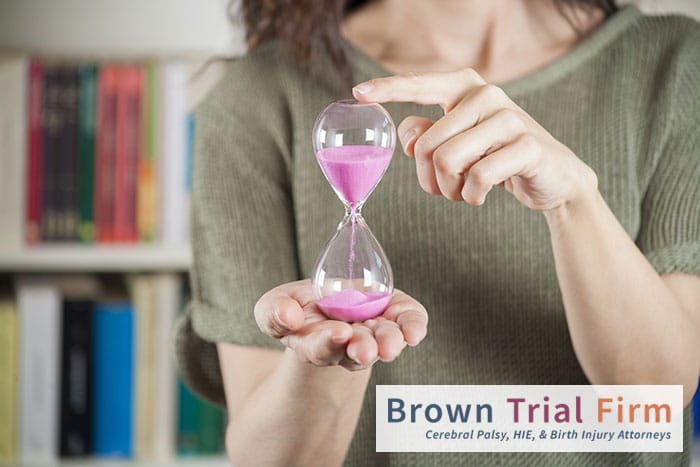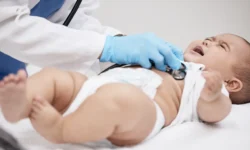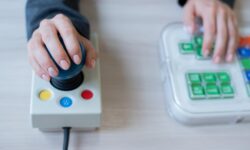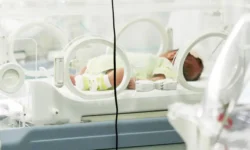All parents hope their children are born healthy, but sometimes, medical mistakes happen. Birth injuries like cerebral palsy can have a significant impact on a child’s motor skills, communication abilities and cognitive function, so it’s crucial to take early action and seek as many resources as possible to help your child live their life to the fullest. Among those potential resources are adaptive technology and devices.
What is adaptive equipment?
Adaptive equipment and technology are types of assistive technologies that can help children born with cerebral palsy and other disabilities. They’re comprehensive systems that can be customized to help each individual based on their specific needs.
Adaptive equipment can be used to help children with visual, auditory, speech and mobility issues navigate a variety of tasks and environments.
Stephen Hawking is a good example of someone who was known to use assistive technology to communicate and move around. The theoretical physicist used adaptive equipment after suffering a neurological disorder that affected his motor skills and abilities.
Birth injuries that may benefit from adaptive equipment and technology
In addition to helping children with cerebral palsy, adaptive equipment and technology can help children with a wide range of birth injuries, disabilities and other issues, including:
- Muscular dystrophy
- Hypoxic-ischemic encephalopathy (HIE)
- Spina bifida and other spinal cord injuries
- Down syndrome
- Brachial plexus injury
- Developmental delays
- Hearing impairments
- Visual impairments
Benefits of adaptive equipment and technology
Adaptive equipment and technology can help improve the lives of children with cerebral palsy and other disabilities in a variety of ways. Here are some examples:
- Mobility. Children with cerebral palsy often have difficulty with mobility. Adaptive equipment such as walkers, wheelchairs and standing frames can help them move around and participate in activities they would otherwise be unable to do.
- Communication. Children with cerebral palsy may have difficulty communicating, especially if they have dyskinetic CP, a form of cerebral palsy that can cause issues with the muscles that control the mouth. Specialized communication devices, such as speech-generating devices or communication boards, can help them express their thoughts and needs to their peers and caregivers
- Independence. Adaptive equipment such as eating and drinking aids, dressing aids and bathing aids can help children with cerebral palsy become more independent and take care of themselves.
- Socialization. Children with cerebral palsy may feel isolated or left out of social activities, but adaptive equipment, such as playground or sports equipment, can make it easier for them to participate and interact with their peers.
- Therapy. Adaptive equipment such as specialized seating systems, standing frames and gait trainers can also be used in therapy to improve a child’s strength, balance and motor function.
Types of adaptive equipment and technology
There are many different options for adaptive equipment and technology to suit the individual needs of the child. The following are a few key examples:
- Digital communication boards. These devices resemble a tablet and sometimes use an app so that children can better communicate with others. Often, they include letters, numbers, words and photos the child can select to get their thoughts across. Some children and parents may need help from a speech or language therapist to learn how to use the device.
- Speech-generating devices. These devices are more enhanced versions of digital communication boards. They use text-to-speech technology to convert written words or symbols into audible speech. The devices can have a variety of input methods, such as buttons, touch screens or eye-tracking technology, depending on the individual’s abilities and needs.
- Eye-tracking devices. Eye-tracking devices allow children with mobility issues to rely on their eye movements to communicate with others. The device conveys what they want to say by tracking their eyes instead of requiring their fingers to tap on anything.
- Specialized commuter mouse or keyboard. These devices are specifically designed to help children with cerebral palsy improve their computer access and overall computer literacy. They may include features such as larger keys and a mouse that requires less hand or wrist movement.
- Hearing aids and cochlear implants. Hearing aids and cochlear implants not only help children with hearing deficits hear better, they also often lead to improved academic performance and increased socialization. Additionally, they help to keep children safe by enabling them to hear important sounds such as alarms, warning signals and approaching vehicles.
- Tablets and smartphones. Children with some mobility can benefit from using tablets and smartphones to communicate. Many of these devices include accessibility settings that can be tweaked to accommodate their needs.
- Robotic exoskeletons. These devices can help children with mobility-related disabilities so they can move their limbs and exercise, building strength and helping with coordination. They can also help them move around independently.
- Wheelchairs. Wheelchairs allow kids with cerebral palsy, paralysis and other mobility-related disabilities to get around their environment. Many of these devices are equipped with controls that make them easy to maneuver.
- Power scooters. Similar to wheelchairs, power scooters come with controls that allow children to maneuver more easily in a variety of environments.
- Walkers, gait trainers, walking sticks, canes and crutches. This equipment may be appropriate for kids who have the physical ability to walk but need additional assistance to improve their stability. Some children will only require one of these devices to move around, while others may need a wheelchair as well, depending on their endurance and mobility.
- Lifts. This equipment allows children with mobility issues to go up and down the stairs and other elevated areas safely.
- Tricycles/bikes. Tricycles and bikes can be modified to accommodate a child’s disability, allowing them to get outside and enjoy exercise and social activity.
- Orthotic boots. Orthotic boots can provide stability and increase muscle tone, making it easier for children to walk without the need for other assistive devices.
- Bath and toilet chairs. Mobility issues can prevent kids from bathing or using the toilet independently. Bath and toilet chairs help keep them safe and may include features like adjustable seat heights, straps, a harness and neck support.
- Adaptive beds. Adaptive beds help children from falling during their sleep and may include features such as protective railings and electronic adjustment.
- Weighted blankets. These blankets can be a helpful tool for children with cerebral palsy by providing sensory input that can help promote relaxation, reduce anxiety and spastic movements, and improve sleep.
- Writing aids. Writing aids such as weighted pencils have additional weight built into the design, which can provide a calming and grounding sensation while writing, and can also help improve grip strength and control.
Overall, adaptive equipment and technology can greatly improve the lives of children with cerebral palsy by providing them with greater mobility, independence, communication and socialization opportunities. It’s important to work with healthcare professionals to determine the most appropriate equipment and technology for your child’s specific needs.
How much time you have to file a birth injury lawsuit depends on where you live.
When to contact a birth injury attorney
Many birth injuries occur because of medical negligence on the part of a doctor or other healthcare provider. If your child developed cerebral palsy, brain damage or another disability after suffering a birth injury, they might need a lifetime of care. Seeking compensation through a birth injury lawsuit can help your family pay for your child’s medical and rehabilitation expenses and provide financial security for their future.
If you believe your child suffered a birth injury because of a doctor’s medical negligence, contact attorney Laura Brown at Brown Trial Firm. Laura has years of experience in birth injury law, helping families like yours all across the U.S. get the compensation they deserve.



